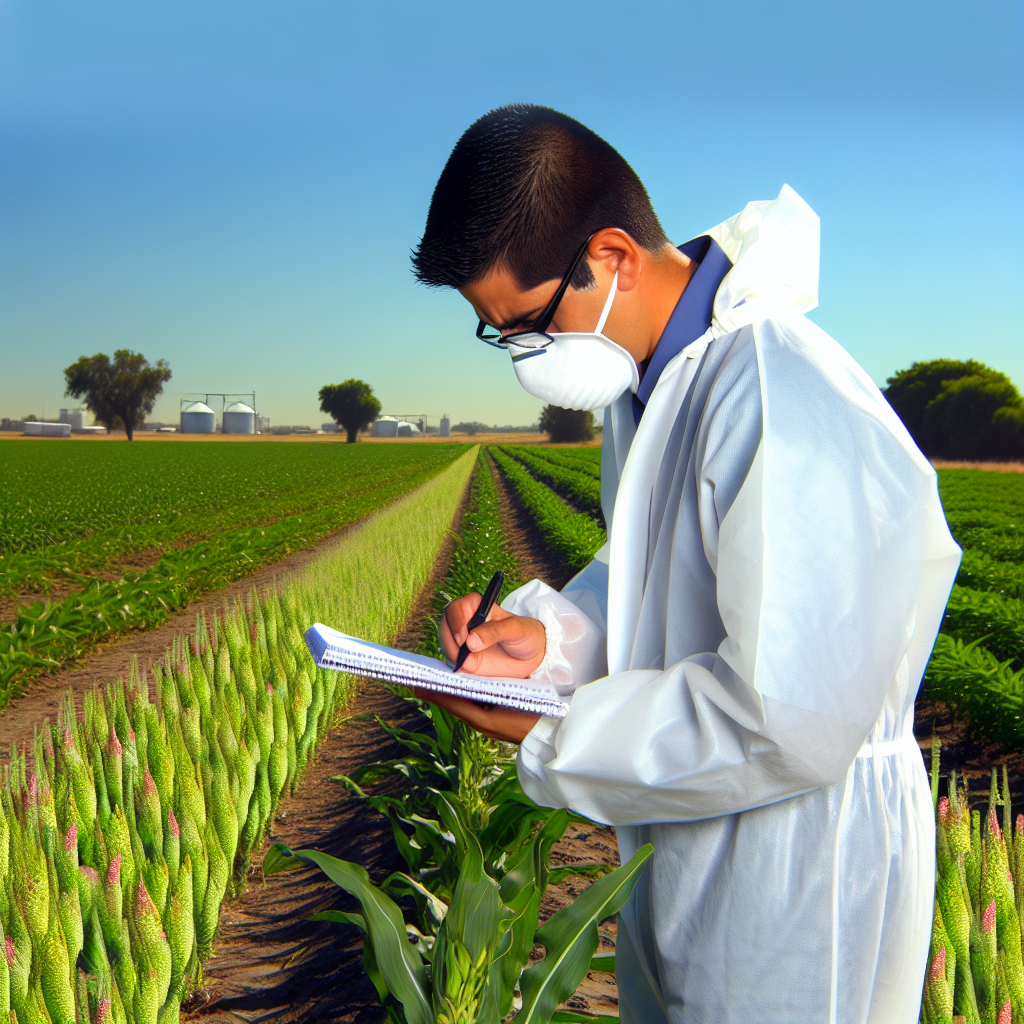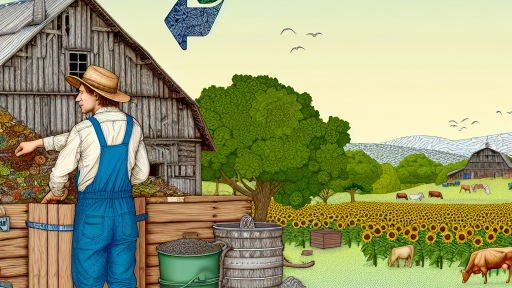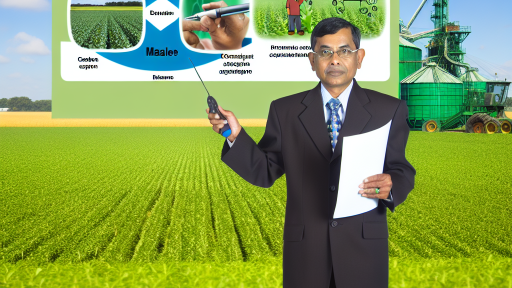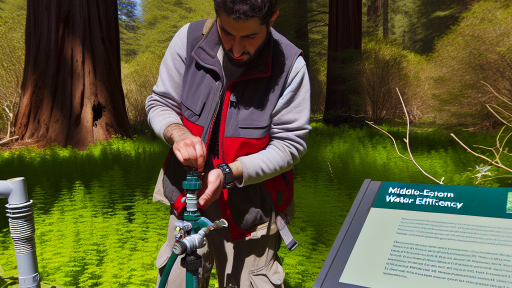Understanding Drought: Causes and Effects on Agriculture
Defining Drought
Drought refers to prolonged periods of below-average precipitation.
This condition impacts water availability across regions.
Farmers often face significant challenges during drought years.
Causes of Drought
Natural climate variability plays a significant role in drought occurrence.
Adverse weather patterns, such as El Niño and La Niña, can exacerbate drought conditions.
Moreover, human-induced factors contribute as well.
Deforestation and urbanization reduce water retention in the environment.
Effects on Agriculture
Drought has immediate and long-term impacts on crop production.
First, it leads to reduced crop yields due to stressed plants.
Subsequently, farmers face economic losses due to decreased harvests.
The quality of agricultural products may also decline.
Furthermore, livestock farmers experience shortages in feed and water supplies.
Long-term Consequences
Prolonged droughts can lead to soil degradation and desertification.
Such outcomes diminish land fertility for future agricultural practices.
Additionally, communities dependent on agriculture face economic instability.
Transform Your Agribusiness
Unlock your farm's potential with expert advice tailored to your needs. Get actionable steps that drive real results.
Get StartedIn some cases, people relocate in search of better resource availability.
Understanding Drought and Its Impacts
Recognizing the causes and effects of drought is vital.
This knowledge helps in developing effective agricultural strategies.
The Importance of Water Savings in Agriculture
Impact of Water Scarcity
Water scarcity poses a significant threat to agricultural productivity.
Farmers face challenges in managing limited water resources.
This scarcity disrupts crop growth and reduces yields.
Moreover, it increases competition for water among sectors.
Economic Benefits of Water Conservation
Implementing water-saving techniques reduces farming costs.
It lowers expenses associated with irrigation and water sourcing.
Consequently, farmers can invest savings into more sustainable practices.
Overall, water conservation leads to better financial stability.
Environmental Advantages
Water savings contribute to environmental sustainability.
They help preserve local ecosystems and aquatic habitats.
Furthermore, less water extraction means healthier water cycles.
This approach mitigates the risk of soil degradation and salinization.
Social Implications
Saving water in agriculture supports community resilience.
It ensures food security for growing populations.
Moreover, it fosters sustainable agricultural practices.
Consequently, communities benefit from improved health and wellness.
Strategies for Effective Water Use
Farmers can adopt various strategies for efficient water use.
- Implement drip irrigation systems to minimize waste.
- Utilize soil moisture sensors for optimal irrigation.
- Practice rainwater harvesting to supplement water supply.
These strategies promote responsible water management.
Ultimately, they ensure sustainable agricultural practices thrive.
Criteria for Selecting Drought-Resistant Crops
Understanding Drought Resistance
Drought resistance is crucial for sustainable agriculture.
Crops must survive in low-water conditions to thrive.
Showcase Your Farming Business
Publish your professional farming services profile on our blog for a one-time fee of $200 and reach a dedicated audience of farmers and agribusiness owners.
Publish Your ProfileFarmers must consider several factors in crop selection.
These include climate adaptability, growth cycle, and yield potential.
Evaluating Climate Adaptability
Crops should be well-suited to local climate conditions.
For example, plants like sorghum thrive in arid regions.
Additionally, farmers can choose native species for better resilience.
This often results in lower water usage and better yields.
Assessing Growth Cycle
A shorter growth cycle can maximize water efficiency.
Crops like barley mature quickly compared to others.
This allows for faster harvests before dry spells may occur.
Farmers should also consider crop rotation strategies.
Yield Potential
High yield potential is essential for economic viability.
Drought-resistant varieties must still produce sufficient output.
Farmers should look for varietals known for robust yields.
Research and data from local agricultural extensions can help.
Seed Selection and Sources
Choosing quality seeds is vital for successful cultivation.
Farmers should opt for seeds from reputable suppliers.
Local agricultural cooperatives often provide reliable options.
Moreover, hybrid seeds can enhance drought resistance.
Integrated Soil Management Techniques
Healthy soil contributes to drought resilience.
Farmers should focus on organic matter content in the soil.
Addition of compost or cover crops can improve soil structure.
Additionally, regular soil testing helps maintain its health.
Water Conservation Practices
Incorporating water-saving techniques is beneficial.
Drip irrigation systems deliver water directly to plant roots.
This method minimizes evaporation and runoff.
Implementing mulching can also retain soil moisture effectively.
Monitoring and Adaptation
Regular monitoring ensures the chosen crops perform well.
Farmers should track growth and water requirements closely.
Adaptation may be necessary based on environmental changes.
Flexibility in planning can lead to better outcomes over time.
Gain More Insights: Agroforestry Planning And Design For Sustainable Farms
Overview of Drought-Resistant Crop Varieties
Importance of Drought Resistance
Drought-resistant crops are essential for sustainable agriculture.
They help conserve water and enhance food security.
Moreover, these varieties are crucial as climate change increases drought frequency.
Common Drought-Resistant Crops
Several crops are known for their drought tolerance.
- Sorghum is highly resilient to arid conditions.
- Millets require less water and mature quickly.
- Quinoa thrives in poor soils and low moisture levels.
- Teff, a staple in Ethiopian agriculture, is drought-tolerant.
Breeding and Biotechnology
Modern breeding techniques enhance crop drought tolerance.
Biotechnology allows for the development of genetically modified varieties.
This science improves water use efficiency in crops.
Consequently, farmers can maintain yields in dry conditions.
Selection Criteria for Farmers
Farmers should consider multiple factors when selecting drought-resistant crops.
Showcase Your Farming Business
Publish your professional farming services profile on our blog for a one-time fee of $200 and reach a dedicated audience of farmers and agribusiness owners.
Publish Your Profile- Local climate conditions greatly influence crop performance.
- Soil type and fertility are critical for successful growth.
- Pest and disease resistance adds value to crop selection.
- Market demand should guide the choice of crop variety.
Potential Benefits of Drought-Resistant Varieties
Drought-resistant crops offer numerous advantages.
They can lead to significant water savings for farmers.
Additionally, they reduce the risk of crop failure during dry spells.
Ultimately, these crops support sustainable land and water management.
Gain More Insights: Conservation Tillage Practices For Small Farms
Case Studies: Successful Implementation of Drought-Resistant Crops
Introduction to Case Studies
Several farms have successfully implemented drought-resistant crops.
These examples provide valuable insights into effective techniques.
They highlight the positive impacts on water savings and crop yields.
The Garcia Family Farm
The Garcia family operates a small farm in Southern California.
Facing severe water shortages, they decided to switch to drought-resistant varieties.
They planted sorghum and millet in place of traditional crops.
This shift reduced their water usage by 30% within the first year.
Additionally, their overall yield remained stable despite the drought conditions.
Green Valley Cooperative
Green Valley Cooperative, located in Texas, has embraced drought-resistant crops.
They introduced varieties like chickpeas and lentils into their production cycle.
This practice helped them cut irrigation needs by 40% over three growing seasons.
The cooperative has reported increased income due to lower costs for water.
Moreover, their soil health improved, allowing for better crop resilience.
Innovations in Technology
Both farms utilized innovative approaches to implement drought-resistant crops.
For instance, they employed moisture sensors to optimize irrigation schedules.
They also engaged in crop rotation to maintain soil fertility.
These methods further enhanced their efficiency and resource management.
Broader Implications for Agriculture
The successes of these farms illustrate a scalable model.
Such strategies can benefit larger agricultural communities facing drought challenges.
Furthermore, they demonstrate the potential for increased food security.
As climate change impacts intensify, adapting to these conditions becomes critical.
Learn More: Top Recycling Practices for Sustainable Agriculture

Best Practices for Managing Drought-Resistant Crops
Choosing the Right Varieties
Selecting appropriate drought-resistant varieties is crucial for successful farming.
Research local conditions before making a choice.
Consider consulting with agronomists for expert advice.
Evaluate crop performance history in similar climates.
Focus on varieties that have demonstrated resilience to dry conditions.
Soi Preparation Techniques
Proper soil preparation enhances water retention.
Test the soil to determine its composition and pH levels.
Incorporate organic matter to improve soil health.
Avoid tilling during excessively dry periods.
Use contour farming or terraces to reduce erosion.
Irrigation Management
Optimize irrigation methods to conserve water effectively.
Utilize drip irrigation systems for targeted water application.
Schedule irrigation during the cooler parts of the day.
Showcase Your Farming Business
Publish your professional farming services profile on our blog for a one-time fee of $200 and reach a dedicated audience of farmers and agribusiness owners.
Publish Your ProfileMonitor soil moisture regularly to adjust water supply.
Implement rainwater harvesting to supplement irrigation.
Pest and Weed Control
Maintain vigilance against pests that stress drought-resistant crops.
Employ integrated pest management techniques for sustainability.
Utilize mulching to suppress weed growth and retain moisture.
Rotate crops to break pest cycles and promote healthy soil.
Monitoring and Adaptation
Regularly assess crop health throughout the growing season.
Adjust practices based on real-time data and weather forecasts.
Engage with local agricultural communities for shared insights.
Stay informed about advances in drought-resistant agriculture.
Delve into the Subject: Sustainable Greenhouse Designs For Year-Round Farming
The Role of Technology in Enhancing Drought Resistance
Advancements in Genetic Engineering
Genetic engineering plays a significant role in developing drought-resistant crops.
Scientists modify plant genes for better water retention and stress tolerance.
This targeted approach creates crops that thrive even in harsh conditions.
Furthermore, researchers employ CRISPR technology for precise gene editing.
This technology increases crop resilience and adaptability to climate changes.
Data-Driven Agriculture
Data-driven agriculture utilizes technology to optimize resource use.
Farmers collect data on soil and weather conditions to inform planting decisions.
Advanced analytics help predict drought occurrences and manage irrigation effectively.
This proactive approach minimizes water wastage and enhances crop yields.
Remote Sensing and Monitoring
Remote sensing technology allows farmers to monitor crop health effectively.
Satellite imagery helps assess soil moisture levels and overall plant vigor.
These insights guide farmers in making informed irrigation choices.
As a result, this technology promotes sustainable water use in farming.
Smart Irrigation Systems
Smart irrigation systems utilize sensors to automate water delivery.
These systems allocate water precisely when and where needed.
Consequently, they ensure minimal water loss and maximize efficiency.
Farmers can monitor these systems remotely, maintaining optimal crop hydration.
Innovative Technologies Transforming Agriculture
Innovative technologies like AI and machine learning are transforming agriculture.
These tools analyze various data sets to improve crop management strategies.
They help predict drought conditions and recommend timely interventions.
By leveraging technology, farmers can make decisions that conserve resources.
Collaborations with Research Institutions
Partnerships between universities and agricultural companies foster innovation.
Collaborative research projects lead to breakthroughs in crop science.
These alliances enhance the development of drought-resistant varieties.
As a result, agricultural productivity improves in water-scarce regions.
Future Trends in Drought-Resistant Crop Development
Advancements in Genetic Engineering
Genetic engineering plays a crucial role in crop development.
Scientists focus on modifying genes to create drought-resistant varieties.
For example, researchers at AgriTech Innovations have identified key stress-response genes.
This innovation allows crops to maintain yield with less water.
Showcase Your Farming Business
Publish your professional farming services profile on our blog for a one-time fee of $200 and reach a dedicated audience of farmers and agribusiness owners.
Publish Your ProfileConsequently, farmers can rely on these varieties in arid regions.
Integration of Precision Agriculture
Precision agriculture maximizes resource use efficiency in farming.
Farmers utilize technology to monitor soil moisture levels accurately.
For instance, smart irrigation systems adjust water delivery based on real-time data.
This method not only saves water but also enhances crop resilience.
Moreover, drones are increasingly used for assessing crop health in remote areas.
Collaborative Research Efforts
Collaboration among researchers accelerates progress in drought-resistant crops.
Academic institutions partner with agricultural companies for innovative solutions.
The Global Crop Improvement Consortium focuses on sustainable practices.
These partnerships prioritize developing crops adapted to climate challenges.
As a result, diverse research teams share knowledge and resources.
Emphasizing Sustainable Practices
Sustainable farming practices are essential for drought resilience.
Farmers implement crop rotation and cover cropping strategies.
These techniques improve soil health, enhancing moisture retention.
Thus, crops grown under sustainable practices often require less water.
Additionally, these practices support biodiversity in farming systems.
Emergence of Alternative Crops
Alternative crops are gaining attention for their drought resistance.
Ancient grains like millet and quinoa are being reintroduced.
These crops thrive in low-water conditions, providing nutritious options.
Furthermore, farmers can diversify their planting choices for increased resilience.
This shift helps reduce reliance on traditional crops vulnerable to drought.
Additional Resources
Agricultural Water Use Efficiency Resource Management Strategy
Water Conservation in Agriculture – Nevada Irrigation District




